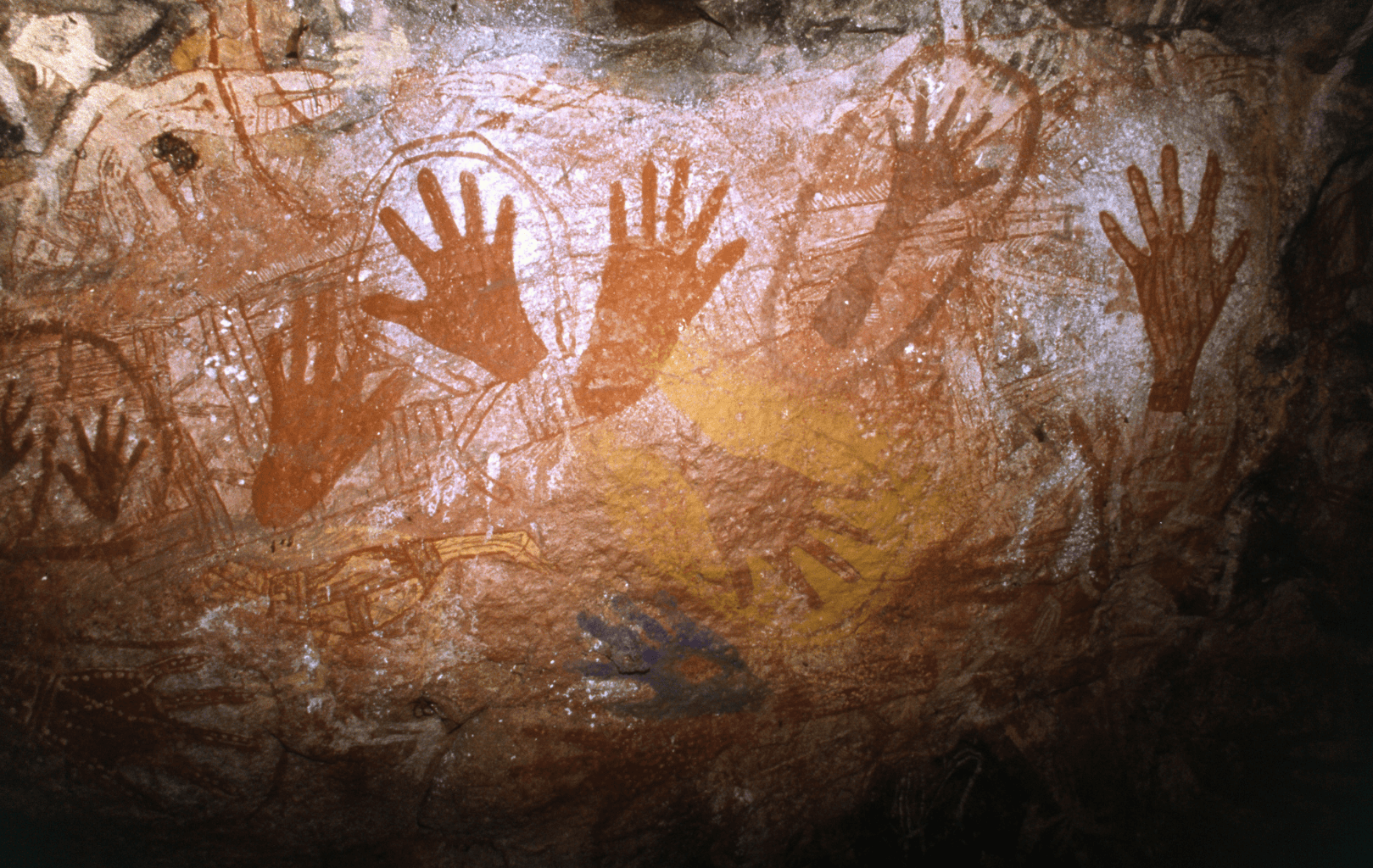Inside the Leang Tedongnge Cave in the Maros-Pangkep region of Sulawesi, Indonesia, scientists found hand stencil artwork on its walls dating back to 39,900 years, along with rock art of a warty pig dating back to 45,500 years ago. The entire island, in general, is home to several rock art paintings such as this; subjects include animals, mixes of animal and human figures, and other articles. The island also houses what is possibly the oldest known narrative scene in art. The paintings were often constructed using pigments made from red colors and mulberry. Unfortunately, these relics of ancient human history are vanishing at an alarming rate due to climate change, according to a study recently published in Scientific Reports.
For instance, the Maros-Pangkep region, home to over 300 different limestone cave art sites, have received reports of paintings “blistering and peeling off the cave walls,” endangering the relics of the past, according to the authors in the website The Conversation. Employing the use of powerful microscopes, chemical analysis, and crystal identification, the researchers studied over 11 sites and found calcium sulfate and sodium chloride in the flakes of rock from three of them, as well as elevated levels of sulfur in all of them. This suggests that the formation of salt deposits are driving the deterioration of the cave art.
Water carries dissolved salts that are left behind once the water evaporates on a particular surface. The remaining salts are sensitive to temperature changes, expanding and contracting with the ups and downs of temperatures. These repeated temperature cycles induce strains on the rocks they end up being deposited on—including rocks on the walls of cave art locations, creating the flaking phenomenon observed. Salt formation is more likely to happen in high humidity and high temperatures—situations made more common by climate change.
The Australiasian region, including Indonesia and nearby countries, have an “incredibly active atmosphere,” according to the authors in The Conversation. This atmosphere is fed by intense sea currents, warm ocean waters, and a continuous supply of trade winds; yet despite this, the rock art formations left behind on these islands have survived for thousands of years. What is alarming, however, is the accelerating rate of deterioration augmented in effect by climate change, as determined by years of observations on the damage caused to these locations over time.
The study authors continue to call for awareness and conservation of these exquisite pieces of human history. As they themselves wrote in the Scientific Reports paper: “The exceptionally old cave art of Indonesia is located within a dynamic tropical environment that renders it particularly vulnerable to the destructive impacts of climate change, adding unique urgency to this call for further research.”
Bibliography
- Huntley, J., Brumm, A., Oktaviana, A., Burhan, B., & Aubert, M. (2021, May 14). How climate change is erasing the world’s oldest rock art. The Conversation. Retrieved August 24, 2021, from https://theconversation.com/how-climate-change-is-erasing-the-worlds-oldest-rock-art-159929
- Saplakoglu, Y. (2021, May 13). World’s oldest cave art, including famous hand stencils, being erased by climate change. LiveScience. Retrieved August 24, 2021, from https://www.livescience.com/climate-change-ruining-oldest-cave-art.html
- Huntley, J., Aubert, M., Oktaviana, A.A. et al. The effects of climate change on the Pleistocene rock art of Sulawesi. Sci Rep 11, 9833 (2021). https://doi.org/10.1038/s41598-021-87923-3











